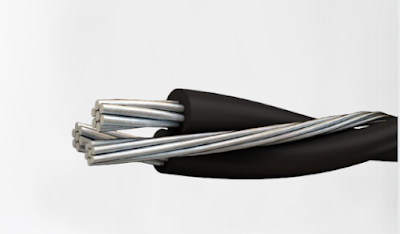What are the Benefits of Type 441 Cable?
 |
| Benefits of Type 441 Cable |
Introduction to Type 441 Cable:
Type 441 cable is a specialized type of electrical cable known for its versatility and durability in demanding industrial environments. This type of cable is designed to meet stringent requirements for performance, reliability, and safety in various applications, ranging from power distribution and control systems to instrumentation and communication networks. Type 441 cable is manufactured using high-quality materials and advanced manufacturing processes to ensure optimal performance and longevity in harsh operating conditions.Benefits of Type 441 Cable:
1. High Temperature Resistance:
Type 441 cable is perfect for use in situations where heat exposure is a concern because it is designed to withstand high temperatures. Reliability is ensured in demanding industrial applications like steel mills, foundries, and chemical processing plants by this cable's ability to function effectively at high temperatures without sacrificing its integrity or performance.2. Chemical Resistance:
Many chemicals, such as acids, alkalis, solvents, and oils, are not able to harm Type 441 cable. This chemical resistance lowers the chance of degradation and failure in corrosive environments like petrochemical plants, wastewater treatment facilities, and industrial laboratories by enabling the cable to retain its structural integrity and electrical characteristics when exposed to corrosive substances.3. Mechanical Strength:
Type 441 cable is built with robust construction and durable materials to experience mechanical stress, abrasion, and impact. This ensures that the cable maintains its integrity and performance even in harsh operating conditions where it may be subjected to physical damage or mechanical abuse. The high mechanical strength of Type 441 cable makes it suitable for use in applications such as mining, construction, and heavy machinery.4. Flexibility:
Despite its rugged construction, Type 441 cable retains flexibility, allowing for easy installation and routing in confined spaces or complex configurations. The flexibility of this cable facilitates efficient cable management and reduces installation time and labor costs, making it a preferred choice for applications where flexibility is essential, such as robotics, automation systems, and industrial machinery.5. Electrical Performance:
Type 441 cable is designed to deliver reliable electrical performance, with low impedance, minimal signal loss, and high insulation resistance. This ensures consistent power transmission and signal integrity, making the cable suitable for critical applications where reliable electrical connectivity is paramount, such as power generation, data centers, and telecommunications infrastructure.6. Fire Resistance:
Type 441 cable is inherently fire-resistant, with properties that allow it to withstand exposure to flames and high temperatures without propagating fire or emitting toxic fumes. This fire resistance helps to minimize the risk of fire-related damage and ensures the safety of personnel and equipment in hazardous environments where fire safety is a concern, such as industrial plants, oil refineries, and transportation facilities.7. Compliance with Standards:
Type 441 cable is manufactured to meet or exceed industry standards and regulatory requirements for performance, safety, and reliability. This ensures that the cable complies with applicable codes and standards set forth by organizations such as the National Electrical Code (NEC), Underwriters Laboratories (UL), and International Electrotechnical Commission (IEC), providing assurance of quality and reliability in diverse applications and environments.8. Water Resistance:
Type 441 cable is often designed with water-resistant properties, making it suitable for use in environments where exposure to moisture or water is a concern. This water resistance helps prevent damage from water ingress, ensuring reliable operation in outdoor applications, marine environments, and areas prone to humidity or moisture exposure.9. UV Resistance:
Some variants of Type 441 cable are engineered with UV-resistant materials, allowing them to withstand prolonged exposure to sunlight without degradation. This UV resistance ensures that the cable maintains its performance and appearance over time, making it suitable for outdoor installations where exposure to sunlight is unavoidable.10. Abrasion Resistance:
Type 441 cable is typically constructed with durable outer jackets or sheaths that provide abrasion resistance, protecting the inner conductors from damage due to friction or contact with rough surfaces. This abrasion resistance extends the lifespan of the cable and reduces the risk of premature failure in applications where mechanical wear is a concern, such as industrial machinery, conveyor systems, and cable trays.11. Flex Life:
Type 441 cable is designed to withstand repeated bending and flexing without degradation, known as flex life. This characteristic is particularly important in applications where the cable is subjected to continuous movement or flexing, such as robotic arms, automated equipment, and moving machinery. A high flex life ensures long-term reliability and performance, even in dynamic environments.12. EMI/RFI Shielding:
Certain variants of Type 441 cable are equipped with electromagnetic interference (EMI) and radio frequency interference (RFI) shielding to prevent electromagnetic interference from affecting signal transmission. This shielding helps maintain signal integrity and reduces the risk of interference from external sources, ensuring reliable communication and data transmission in sensitive applications such as medical devices, aerospace systems, and telecommunications networks.13. Customization Options:
Type 441 cable is available in a variety of configurations, including different conductor sizes, insulation materials, jacketing materials, and shielding options. This allows for customization to meet specific application requirements, such as temperature rating, voltage rating, flame resistance, and environmental conditions. Customized solutions ensure optimal performance and compatibility with the unique needs of each application.14. Cost-Effectiveness:
Despite its advanced features and capabilities, Type 441 cable offers cost-effective solutions for industrial applications. The durability, reliability, and longevity of Type 441 cable help minimize maintenance costs, downtime, and replacement expenses over the lifetime of the installation. Additionally, the availability of standardized configurations and custom options allows for flexibility in meeting budgetary constraints without compromising performance or quality.Conclusion:
Type 441 cable stands out as a versatile and durable solution that delivers superior performance and reliability in challenging industrial environments. Its combination of advanced features, customization options, and cost-effectiveness makes it a preferred choice for a wide range of applications, providing businesses with the confidence and assurance they need to succeed in today's competitive marketplace.Visit Also:
https://znergycableaustralia.blogspot.com/2024/02/what-are-fire-rated-cables-made-of.htmlhttps://znergycableaustralia.blogspot.com/2024/02/is-capillary-tube-concave-or-convex.html
https://znergycableaustralia.blogspot.com/2024/02/what-is-coil-tubing-used-for.html
https://znergycableaustralia.blogspot.com/2024/02/how-is-expansion-valve-different-from.html
https://znergycableaustralia.blogspot.com/2024/02/what-is-non-metallic-nm-cable.html
https://znergycableaustralia.blogspot.com/2024/02/what-metals-are-generally-used-in.html
https://znergycableaustralia.blogspot.com/2023/12/discover-excellence-in-electrical.html
https://znergycableaustralia.blogspot.com/2023/11/what-is-use-of-capillary-tube-in-ac.html
https://znergycableaustralia.blogspot.com/2023/11/what-is-power-transmission-capacity-of.html
https://znergycableaustralia.blogspot.com/2023/08/facts-about-medium-voltage-cables.html



Comments
Post a Comment